Streaker hoggets (1/2 Nudie) and Brazilian lambs (3/4 Nudie). Streaker ewe hoggets docked 89% in 2023
2023-24 is shaping up to be the worst year for sheep farmers in a long time. How do we dig out of this hole? If you treat pressure as your friend, this is the chance to change, to innovate. There is a team cycling quote: “You always make your gains on the uphill, not the downhill”.
Bright lights
All commodity prices peaked in mid 2022. Since then the global shutdown because of Covid has ended. But money printing and borrowing fuelled inflation in New Zealand and many countries.
By contrast, China claimed just 1% inflation last year. The only way that Chinese consumers can pay more for lamb in New Zealand dollars is if the NZ dollar depreciates. The “Chinese premium” for lamb was adding around $40 to the farm gate price. That is the big gap in our farm gate schedule.
There are bright lights elsewhere.
- British farmers were getting £6.10-20 per kg($NZ12.70) in the second week of January, despite the new free trade agreement with Australia. Some British supermarket chains are promoting “we sell only home produced lamb”.
- A growing Muslim population in the UK and around the world is increasing the demand for mutton as well as lamb.
- Heavy rain in Victoria jumped the lamb schedule to $7.50 per kg in early January. Farmers contracted at $5.20 are spitting.
- Rack prices are holding up well in North America.
- New Zealand has a big quota into the EU, whereas Australian lamb faces big tariffs.
- Low retail pricing on lamb and mutton is increasing demand in our local market as well as overseas.
Cut your workload
We’ve had great feedback from the farmers who bought Nudie ram lambs last autumn. They grew on well, and were top tuppers. Some farmers never saw them working (are they shy?), and were amazed to end up with 99 or 100% of ewes conceiving.
John and Brent McGurk, Wairoa. “We put our Nudie to 80 Coopworth ewes. They scanned 246%, docked 212%, only 14% wastage, and the lambs averaged 30kg at weaning on December 7, 64kg per ewe, and no ratbag lambs. Our main flock had 18.5% wastage and 27kg average weaning weight. Of 92 ram lambs at weaning, only 3 of the first cross were daggy. We are rapt with the result”.
Matt Brown, Taihape. “I put two Nudie ram lambs to 300 ewes and only three scanned dry. Two weeks after weaning the male lambs average 38.5kg, the Romneys 36. I was shocked by the difference. They have shedded a lot more than I expected too.”
Richard Hay, Wairarapa. “I docked 167% from Wiltshire too tooth ewes put to one Nudie ram lamb, with lambs growing better than any other breed I’ve used”.
Shane and Ken Hamilton, Whangarei. “We put four Nudie ram lambs to 400 ewes, 6 dry, docked 540 lambs. Kept 270 ewe lambs at weaning on December 12, 108 days average age. Killed 146 male lambs at 17.5kg POM, some of the best lambs we’ve had before Christmas.
90% of the first cross ewe lambs have started shedding wool, and a few have fully shedded. The next cross, 3/4 Nudies, should be well on the way to wool-less sheep”.
Doug McKenzie, north Wairarapa. “I’m very pleased with the progeny from the three Nudie ram lambs, good type. They weigh like terminal sired lambs. After a winter of cutting mud dags off thousands of winter trade lambs, I’m looking for an easier type of sheep! I’m thinking of putting Streakers over 2,500 ewes on one farm to see if the quarter Nudie gives hybrid vigour and reduces dagging.”
Dale Transom, Taihape. “In mid January I had to shear my Romney lambs because of flystrike, but only one Streaker lamb was struck.”
John Petersen, Taumarunui. “I took a big punt and bought twelve Nudie ram lambs at auction in March 2023. That punt has paid off . I docked nearly 2,000 Streaker lambs. The lambs are very impressive. Next year I want all my lambs to be half Nudie. I sell most lambs store to regular buyers so I need to know that Nudies will be a winner for
my buyers too”.
Farmers want to know that using Nudies will:
- Grow lambs quickly to 20kg CW or more
- Maintain or improve their flock lambing percentage
- Allow a good hogget lambing
- Maintain or improve constitution
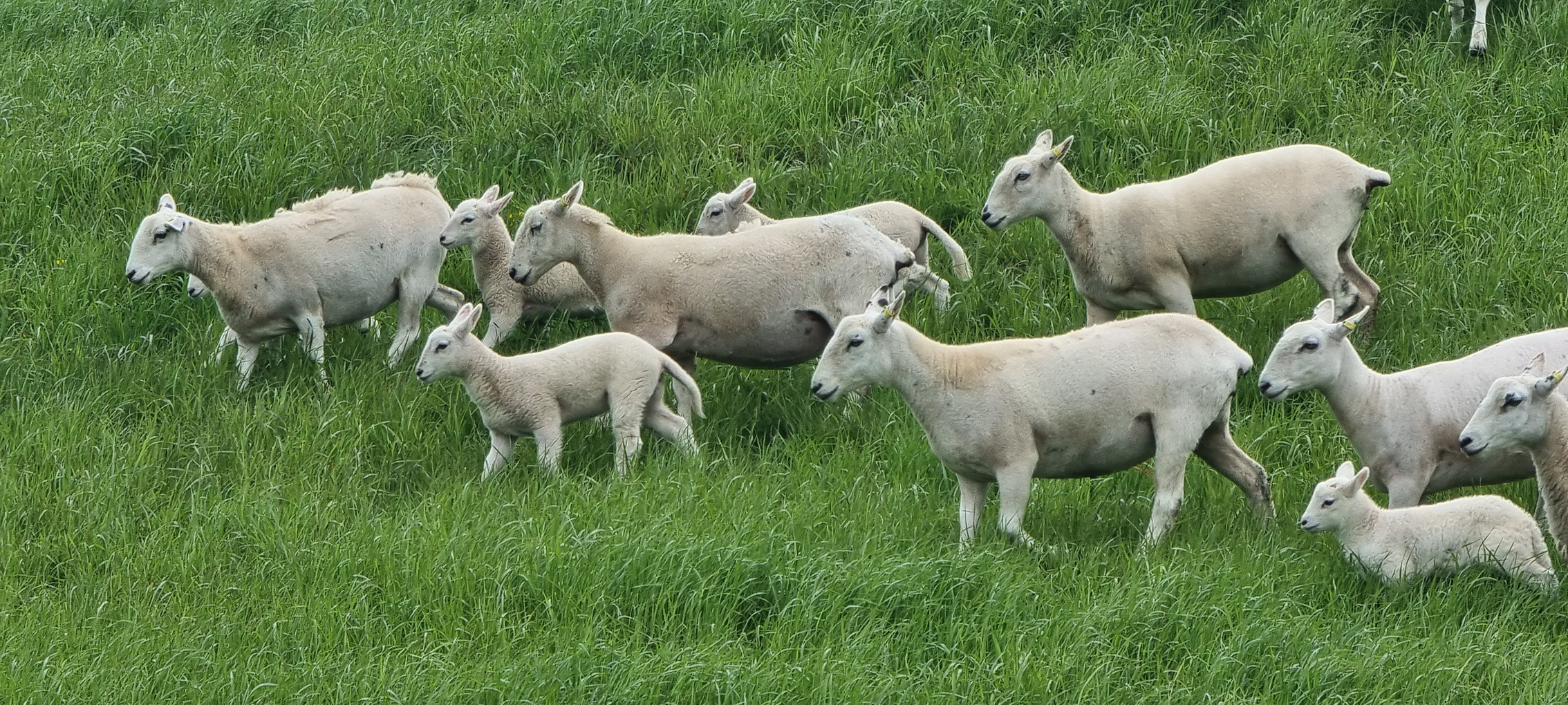
Purebred Nudie ewe hoggets with Nudie lambs
What might work best for you?
This year Wairere mated 250 Streaker(first cross) ewe hoggets and docked 89%. The purebred ewe hoggets (none culled) docked 70%. The Brazilian(3/4 Nudies) lambs on the Streaker ewe hoggets had shed their baby fluff by weaning. Imagine a future with no dagging?
In Australia , large scale beef operations are more profitable than sheep because they can be run with one person per 17,000su, compared to sheep at 7,000 stock units. Could one person run 17,000 Nudie stock units? If the scale of your farm is smaller, say 5,000 Nudie and cattle stock units, could you run another business in your free time?

Two tooth Nudie rams, October 2023.
Do you go full Monty and go full Nudie?
Or go part way and reduce your workload?
Progeny test
Early this year we will kill a line of Streaker (half Nudie) and a line of Romney ram lambs as a comparison. Mike Abbiss is running 570 of these lambs near Halcombe, Manawatu, half on crop, half on grass. Carcass weight, yield and intramuscular fat will be compared across breeds and feed. We will have details of that comparison before the auction on February 28.
What is your limiting factor?
The Wairere brand commands buyer interest. Even terminal sired lambs are half maternal. Don’t let your limiting factor be genetics!
Are your limiting factors management and feeding? Animal health? lack of scale?
Chris Mulvaney, who started Stockcare, educates farmers around the key drivers for best animal performance. “Start with monitoring BCS through the year. Put a huge focus on growing hoggets out well. Will capital fertiliser create a quantum leap in quantity and quality of pasture? Look at the distribution of live weights in an age group, not just the average. What is your animal health program? Do a FECRT (faecal egg count reduction test)…you can’t manage internal parasites if you don’t know where you’re starting from. I have not yet seen a farm go broke with drench resistance.”
Where are the technology wins?
In August I met a couple from West Australia. They farm 14,000ha near Esperance, alternating wheat and canola, with five permanent employees. The rapid improvements in technology have been a boon to this farming operation. Direct drills are now 25m wide, weed sprayers 50m wide, mounted with cameras to spray only when weeds are detected. No fences required. The biggest problem is mice. Mice have a four generation memory for a specific poison, so control measures have to be changed frequently. This was Mallee gum country. The Australian government incentivised settlers after WW2, offering land at $100 per acre. Clearing trees was a big job. Some pioneers stuck at it, some left. It wasn’t until the 1980s that tractors became big enough to extract stumps and allow full scale arable. Growing scale and ever bigger machinery have created a very efficient and profitable farming system, making over $A6 million per permanent employee in 2022-23.

Dairying made easier
In Canterbury a guaranteed feed supply via irrigation has allowed the development of very efficient systems based on pasture. Rotary ilking parlours with all the bells and whistles take most of the human work out of milking. The Allflex metabolic collar allows more exact timing for AI, and a higher conception rate in the first cycle. The collar also confirms pregnancy, and indicates any health issues. Halter enables virtual fencing, and can warn when cows have grazed to the perfect residual. A camera set up at water troughs will blue tooth with a cow’s ear tag. The photographic image of the body enables a live weight estimation within 5kg, and the feed conversion efficiency of an individual cow can be calculated relative to milk solids or litres produced.
There are now calf feeding machines which mix milk powder with warm water. Within six seconds of the calf starting to suckle, there is milk on tap. Gone is the crowding of calves around the first person to appear in the morning, with this DIY solution. One person can now
comfortably feed a thousand calves.
What about technology for sheep?
Aerial topdressing in the 1950s and Merck’s Magic Medicine (Thibenzole, the first effective drench) in the early 1960s provided revolutionary leaps in performance. Since then there have been big genetic improvements in lambing percentage, growth rate, and average carcass weight of lambs.
But where is the next quantum leap in technology, or product value?
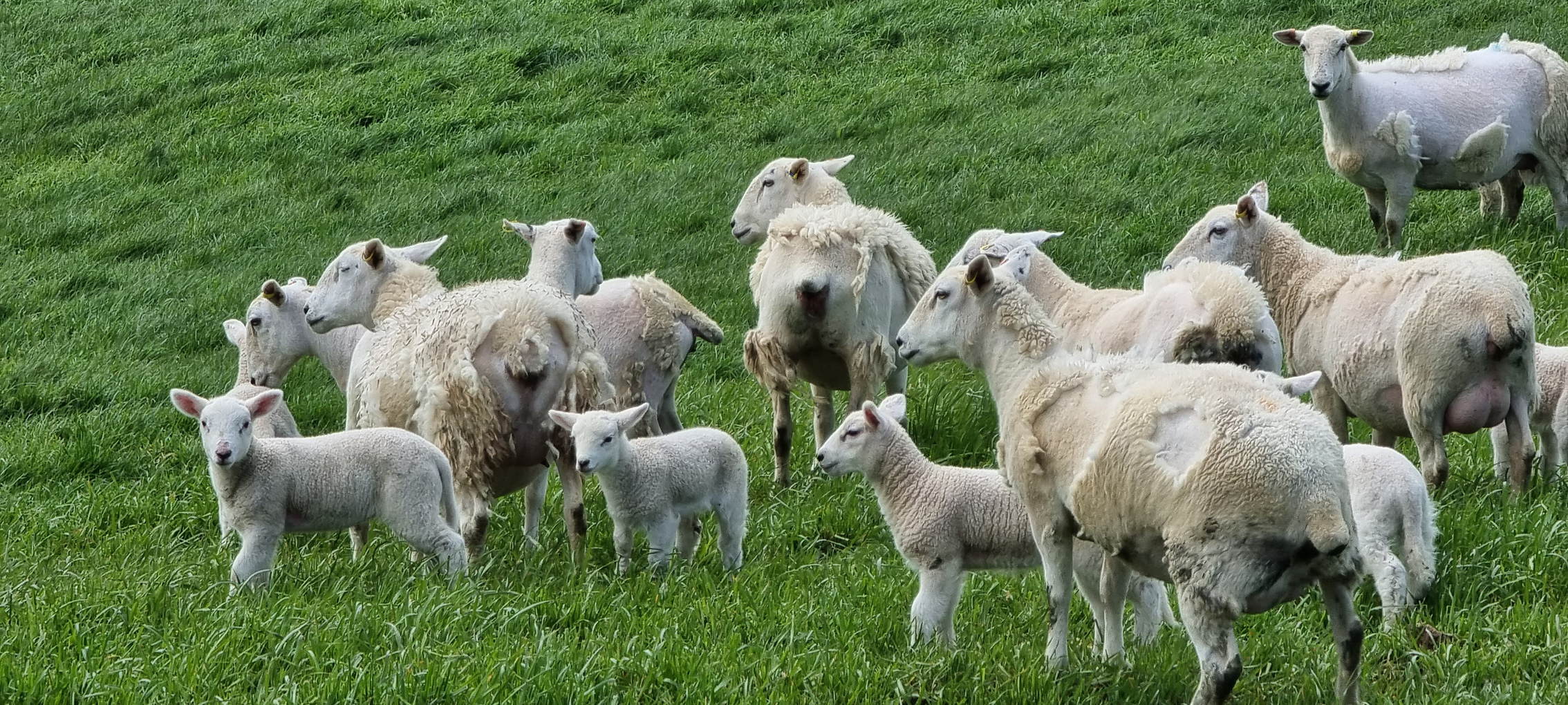
Purebred Nudie ewe hoggets with Nudie lambs.
A global view
Pierre Syben started his association with Wairere in the 1990s.Between 2017 and 2023 he sold Wairere rams in Australia, the UK, and Ireland.
“Derek has asked me to pen some observations of what’s been & what’s currently going on in Australia, the UK & Europe. I’m also going to roll into my own thoughts about NZ for 2024 & beyond.
Some of the latter may differ to some degree with Derek, however that’s the strength of the Wairere business. Derek has always encouraged debate and thoughts from everyone at Wairere whether you’re the junior shepherd or for some of us approaching the supposed official retirement age!
Australia
The collapse in prices is well documented, most particularly in the sheep industry. This dramatic fall in prices has affected all along the chain.
Live exports for sheep in 2018 (all from WA) were 1.18 million head, in 2022 just over 500,000 (annualised fall of 31%) they are now of course banned altogether.
This has drawn a mass exodus of farmers running sheep in the West, with anything upto four to five months delay to get ewes slaughtered, with only one processing plant in WA. You don’t need me to tell you what happened with the price.
Over in the East early talk of droughts started the panic sell off we saw starting in late August & lasting through until the end of November.
I’ve seen many thousands of lambs trading at around $1.30 per kilo lwt & Merinos trading at 50c per kg. The printed ewe schedule got as low as $2 per kg but because of the delay in processing, thousands were sent to the Saleyards making from $5 to $20 per head. Lamb schedules got as low as $4.50 per kg.
The good news is……rain came and in parts lots of it! Lamb schedules are back up to $7.50 for the week starting 8th January, & ewe prices have lifted since correspondingly.
Hopefully some of the backlog of product around the world will start to clear, it won’t happen overnight but it will help.
I’ve always said Australia is a tough place to farm & having experienced it firsthand I can talk with some experience.
From across the ditch we always wonder how our counterparts cope with these fluctuations in climate and product prices.
Average farm equity is 90%+ across Australian farmers, maybe that’s the clue??
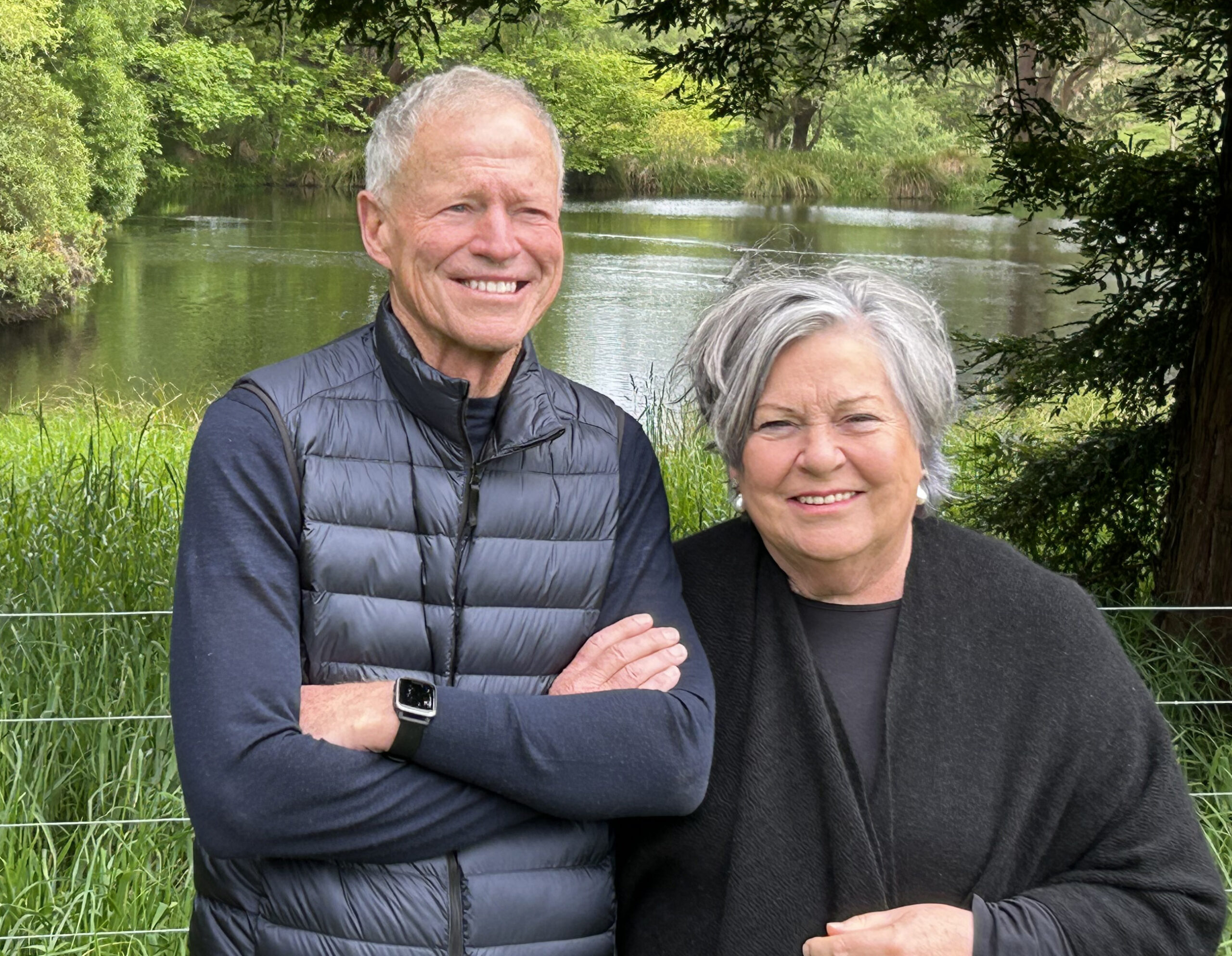
UK/Europe
I spent May through to October in the Northern Hemisphere (no winter, great!) visiting clients and some industry research for Derek, plus of course sourcing the Nudie genetics for our 2024 embryo & AI program.
A client in the UK week commencing 1st January killed lambs at £6.10/20 per kg.
They’re in the middle of winter and near their lowest supply point so there’s probably a little more movement in the lamb price yet, in 2022/23 it reached £7.50 per kg (NZ$15.55).
Subsidies in the UK are still alive and well, the only change is that they’re now more environmentally focused. For example you can currently get a one off payment of £417 per hectare just to fallow land for 3 months over the winter, plant some birdseed plants in the paddock and you’ll get another £100 per hectare on top & so it goes on.
What you have to understand is Agriculture as a percentage of the UK economy is just 2.7%, there’s a huge number of farmers in the UK that simply wouldn’t survive without subsidies, but by retaining them on the land they’re still caring for it & they’re still producing food. Plus it retains the fabric of all those local villages, there’s still a doctor, there’s still a butcher and a grocery shop, it’s hard to argue that they are wrong!
If your farm is in the right spot and lies the right way you can get £1000 per acre per year on a long term lease to a power generator. This payment increases with the annual CPI.
Not even dairying touches that in the UK.
In France & Germany the subsidies are land & livestock based, meaning you receive an annual per head payment for your livestock. When you travel around & talk to farmers about these payments it’s hard not to wonder if they’re farming livestock or subsidies.
A big chunk of the annual lamb supply is transported to Turkey who are quite big consumers of lamb as opposed to the Germans & French. Annual lamb consumption in France is just 2 kgs per capita, as opposed to 38kgs of pork!
I went into 2 supermarkets on the border of Poland, they didn’t have any red meat.

Above: Wairere helped sponsor a shearathon in January 2024, an event to support rural charities. Shearing technology needs AI!
Right: Sir Lockwood and Lady Alexandra Smith at Wairere. Lockwood was Minister of Agriculture in the mid 1990s, also of Education, Tourism, International Trade, and Deputy of Finance! He then became Speaker of the House. “I decided that the Speaker could function well on 1/3 of the budget provided, and that proved correct.” This approach to Government spending needs to be applied to all Departments. Lockwood is still farming in Northland, farming some of the best Belgian Blue cattle in the world.
So what about New Zealand?
When I compare farming in NZ to our friends across the Tasman & livestock farming as an industry in the UK & Europe we’re incredibly lucky to have the calibre of service companies we have here. Our Livestock companies, Livestock carriers and Meat companies are better than anything I’ve seen, in particular our meat processors. We have a number of companies who are competitive, give really good information/feedback & most importantly they pay on time.
Also they’re profitable. Sure Alliance has had a well documented loss this last year, but they’re still investing in their business, that’s the important thing. The competition for selling meat around the world is pretty fierce so we need our meat companies to continue to invest in R&D to keep us at the front of the queue, the technology around
IMF & eating quality is one such thing that will help to ensure a quality eating experience. They’re well down this track in Australia but I’ve seen little evidence of it in the UK.
I touched on the environmental payments linked to UK farming, but equally animal welfare standards like anaesthesia treatment on lambs for tailing and castration are more & more in the news.
On top of this we’ve got the whole Carbon Zero, Methane Emissions, that good old buzzword Sustainability all chucked into a basket called Climate Change Initiatives.
Whether you’re a believer or a nonbeliever is irrelevant really.
Climate Change is now an industry which employs a lot of people worldwide. It’s not going to go away just because we’ve had a change of government in NZ.
You only have to listen to the narrative from companies/supermarkets worldwide. The rules of compliance to supply food to these companies in the Northern Hemisphere are rules that will end up here, of that I have no doubt. We will farm differently into the future.
Every sheep & beef farmer in NZ has most likely started 2024 wondering how they’re going to keep the red ink on their budget to a minimum. Many of you have told me what your budgets look like. Whilst I don’t want to lessen the significance of the situation, what it will do is make you analyse your business and look for the low hanging fruit, it’s not going to be selling for a better price, none of us have much influence on what we get paid. It’s most likely going to be what can I cut out on costs without reducing productivity?
Cost of Production explains 70% of profitability
A fall in income, as long as it doesn’t go on for too long, can be healthy for the business and make us all concentrate on efficiencies within.
One thing I find wherever I go in the world is that NZ farmers are held in extremely high regard. They follow us closely to see what’s happening, particularly with sheep performance.
In this field we are the envy of many countries for the performance we get with a minimum of inputs & our ability to adapt to change.
There’s a lot happening for us with a new release of Nudie genetics in February. We’ve had some great results from farmers who purchased in 2023 & have now got progeny on the ground.
The growth rates reported on the lambs have been excellent & many have reported noticeably lower mortality rates from scanning to tailing.
I look forward to catching up with anyone interested at our open day on February 1st at Paihiatua or at the auction in Masterton on the 28th February.
For any North Island client not attending these days I’ll look forward to catching up with you through the year.”
Divide and rule
The last Labour government pitched poor against rich, urban against rural, part Māori against non Maori. Ruby Tui’s excellent autobiography, Straight Up, emphasises the importance of building team unity. New Zealand is a small country, and rapidly getting poorer because of bad decisions made over the past few years.
The first was pushing up the minimum wage 44%, which led to all wages rising 27% and spiralling inflation. It has led to New Zealand living well beyond its means, with the government borrowing $74m per day to prop up its spending, which has ballooned from $80 billion per year in 2017 to $140 billion in 2023, a 75% increase!
When the biggest export sector, pastoral farming, is losing money, there is something intrinsically wrong with the economy. That imbalance cannot be fixed by gouging employers with wage hikes, extra holiday, five days extra sick pay, more parental leave. New Zealand is not a low wage economy, it’s a high cost economy. It didn’t used to be like this. What went wrong?
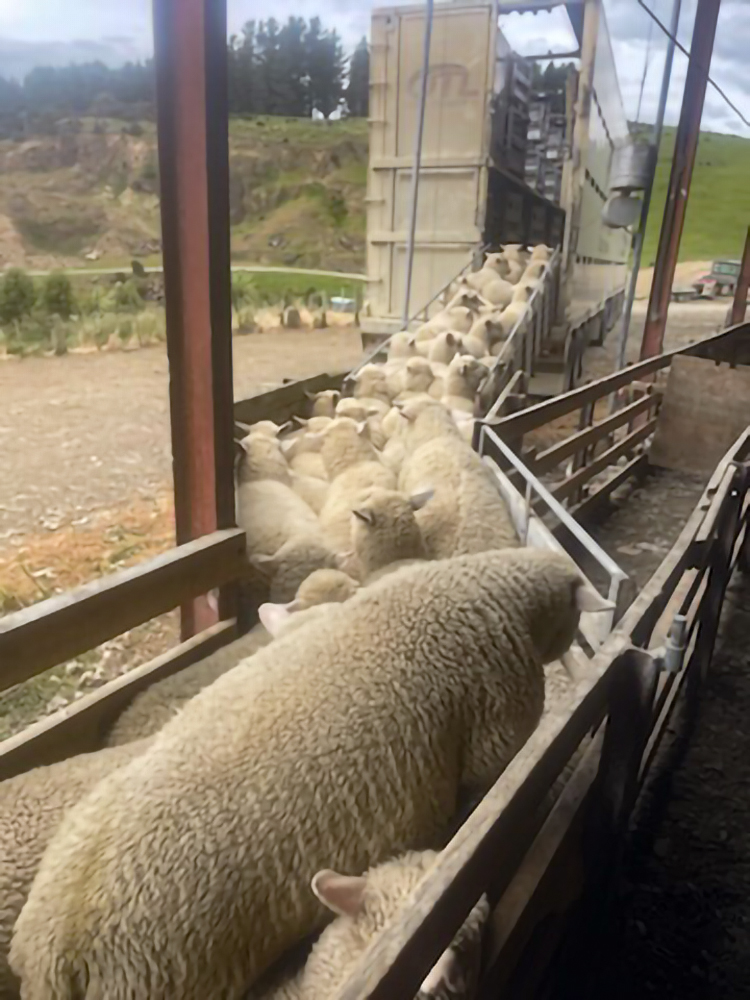
Andy Wells’ lambs loading onto a truck after his store lamb sale, South Otago. “My on farm Elite Wairere store lamb sale on December 7 went off like a firecracker. Lamb price ranged from $83 to $116, and per kg price was better than $3 per kg. The Wairere brand makes for repeat buyers. It’s a win/win for both parties.”
Work ethic
Coupled with Ardern’s “kind” approach to politics has been a change in society’s approach to work and education. The “security first” approach to the panicdemic changed attitudes (despite statistics showing that only one percent died, and most of those were over 80 years old, a decision was made to form FortressNZ). There is an assumption that New Zealanders deserve a first world standard of living without making a lot of effort. Benign social welfare rules allow some to work two or three days per week and stay in assisted housing. The handout society includes:
- 170,000 superannuitants aged 65-67. Australia’s retirement age is now 67, and will be 67.5 in 2026. We have John Key to blame for not moving on retirement age.
- 173,000 “work ready” unemployed. When are they going to start working to help out the decreasing number employed in private enterprise?
- 100,000 more in the Public Service 2017-22, rising from 348.000 to 448,000, a 29% increase.
- Total of 443,000 in the above categories…how many passengers can the NZ economy afford?
- Learn lessons from Elon Musk and Graham Hart in efficiency. These lessons need to be applied to all forms of government. Private enterprises can get comfortable too, until a financial crunch comes along.
- Corruption levels in New Zealand have risen sharply. Example: DOC payment for three

Jess Daniell at Jess’s Underground Kitchen. She has had to downsize from 45 to 18 employees, terminate her four delis/cafés in 2023 and take all measures possible to balance the books. She is representative of many small businesses, urban as well as rural.
JUK prepared meals in your local New World or Countdown supermarket.
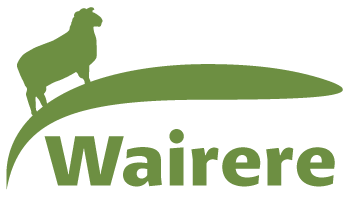
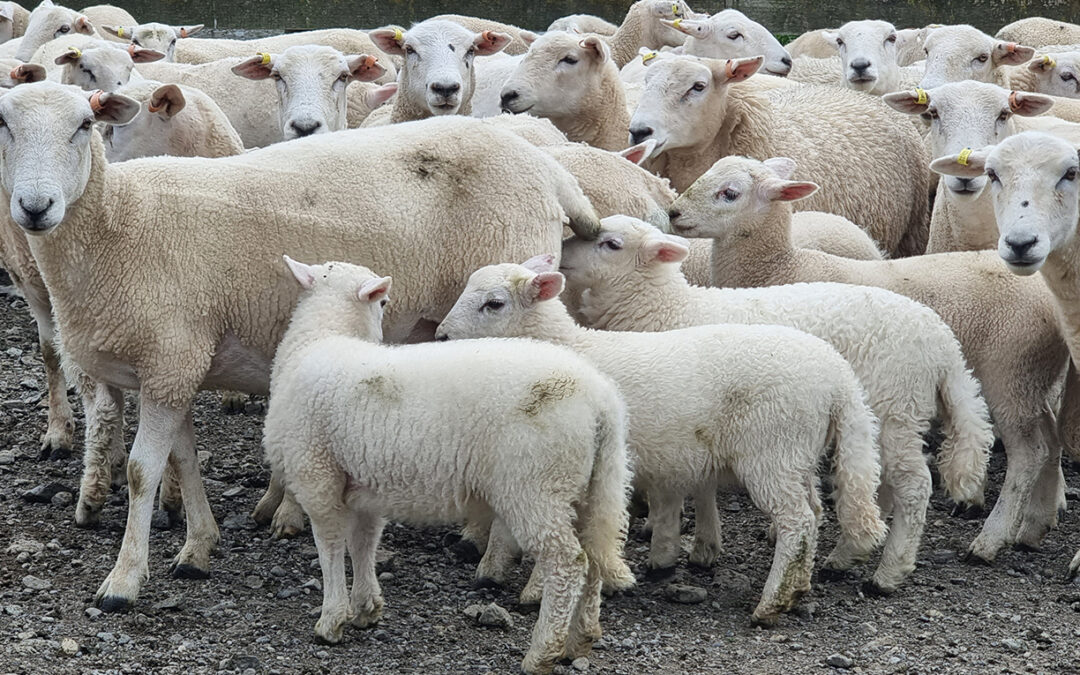
Recent Comments